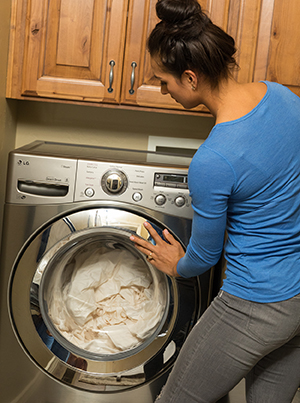Head Lice
Lice are very tiny insects. They like to live in hair, so they are often called “head lice.” An infection with head lice is very common in school-age children, but anyone can get lice. Head lice don't live on pets and can't jump, fly, or walk on the ground. They easily pass from child to child through close, head-to-head contact. They spread less easily from clothes, bed linens, brushes and combs, hats, and toys. Head lice infections are not dangerous, but they can be hard to treat sometimes. They are very contagious and should be treated right away to stop infection from spreading.
Symptoms of head lice
Lice are so small and fast-moving that they are hard to see. Head lice lay eggs, called nits. Nits are very small, silvery white, and teardrop shaped. They often can be found stuck to the hair near the scalp, behind the ears, and at the hairline on the back of the neck. Other signs of head lice may include:
-
Itching of the scalp and scalp irritation
-
A tickling feeling of something moving through the hair
-
Sores on the scalp caused by scratching
-
Swollen glands at the back of the neck caused by infected bites
Treating head lice
-
Ask your healthcare provider or pharmacist to recommend a shampoo, cream, or lotion to stop lice infestation. Follow the instructions on the product for how to use it.
-
Comb the nits out of your child’s hair with a special comb that comes with the product or is recommended by your healthcare provider or pharmacist.
-
After a week, check your child for more nits. Follow the product’s directions and ask your healthcare provider about the need for repeating treatment.
-
Check other household members for lice.
-
Wash your child’s towels, clothing, bed linens, cloth toys, and other personal items in hot soapy water. Dry them on high heat.
-
Wash all the child’s combs and brushes in very hot, soapy water.
-
For items that can’t be washed, seal them in plastic bags for 2 weeks.
-
Vacuum floors and furniture. Throw the vacuum bag away afterward.
-
Notify your child’s school and caregivers so that other children can be checked.
-
Keep your child home from daycare or school until the morning after treatment for lice.
-
Don't spray your house with chemicals or pesticides. These are not helpful and can be dangerous to your family’s health.
 |
| Use hot soapy water when doing laundry to help control head lice. |
When to call the healthcare provider
Don't treat your child for head lice unless you are sure the child has them. Because lice are insects, most products to get rid of them have pesticides in them. You should not expose your child to these chemicals unless it's necessary since they can cause skin and eye irritation. Call your child’s healthcare provider if:
-
You’re not sure whether your child has lice.
-
Your child is younger than age 2.
-
Treatment doesn’t get rid of the lice.
-
Your child has infected sores that get worse or don’t heal.
-
Your child is itchy or scratching in areas other than the scalp.
-
You have questions about your child’s illness or treatment.
Prevention
To help prevent the spread of head lice:
-
Teach your children not to share brushes, hats, and clothes with other children.
-
Have your child avoid physical contact with anyone who has head lice until after the person has been treated.
-
Examine your child when they have come in close contact with a person infected with lice.
It may take up to a week after treatment for your child’s itching to stop. Your healthcare provider may recommend that you repeat treatment a week later, but your child can return to school or daycare the day after treatment.
Online Medical Reviewer:
Michael Lehrer MD
Online Medical Reviewer:
Raymond Kent Turley BSN MSN RN
Online Medical Reviewer:
Tennille Dozier RN BSN RDMS
Date Last Reviewed:
2/1/2022
© 2000-2024 The StayWell Company, LLC. All rights reserved. This information is not intended as a substitute for professional medical care. Always follow your healthcare professional's instructions.